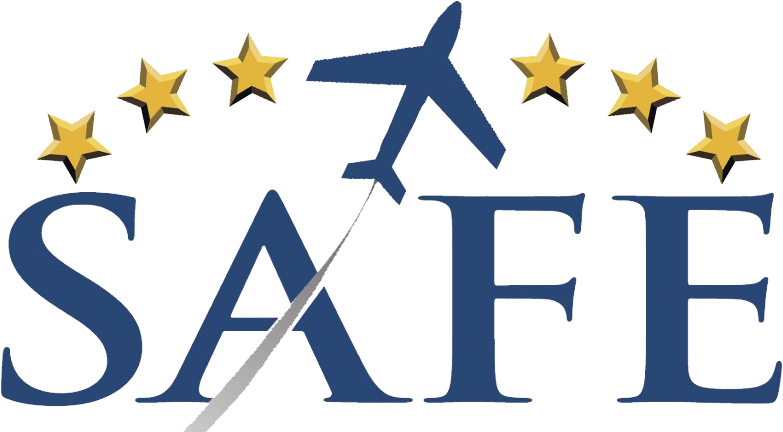You probably detect a similarity between this title and the alcohol awareness program “Mother’s Against Drunk Driving”. If you are younger than me, you may not even be aware of this program’s existence since  “sober driving” is now the accepted cultural norm. Now we use designated drivers and “friends don’t let friends drive drunk!” Unfortunately this was not the case in my teenage years when drunk driving was almost a locally accepted sport. MADD was founded on September 5, 1980, in California by Candace Lightner after her 13-year-old daughter was killed by a drunk driver. This highly commendable movement ultimately created such a new awareness that drunk driving is culturally unacceptable and morally reprehensible. In my opinion, a similar awakening would be a great improvement in aviation safety if we could similarly curtail our highly prized “freedom to do dumb things” and leverage a new aviation safety norm.
“sober driving” is now the accepted cultural norm. Now we use designated drivers and “friends don’t let friends drive drunk!” Unfortunately this was not the case in my teenage years when drunk driving was almost a locally accepted sport. MADD was founded on September 5, 1980, in California by Candace Lightner after her 13-year-old daughter was killed by a drunk driver. This highly commendable movement ultimately created such a new awareness that drunk driving is culturally unacceptable and morally reprehensible. In my opinion, a similar awakening would be a great improvement in aviation safety if we could similarly curtail our highly prized “freedom to do dumb things” and leverage a new aviation safety norm.
We all have seen other pilots do amazingly stupid things in planes (as we also have certainly done some dumb things ourselves). When someone hurts or kills themselves in a plane, it often is not a “surprise” but an “inevitable result” sometimes after years of drifting into increasingly unsafe practices. Though we in aviation all have a wonderful respect for personal freedom and the privacy, it often prevents us from intervening and saying something even when safety is clearly compromised and the results are predictable and preventable. I highly prize and defend personal freedom, as you probably do, but I think here it is time to make a change in what is “acceptable.” We all have the potential to make bad decisions and should appreciate a “nudge” toward safety. Even the famous aerobatic performer Sean Tucker publicly shares how Bob Hoover approached him after watching one of his early airshows, put an arm around him and advised a little more safety margin in his routine. Sean says this was a necessary and ultimately welcome intervention that later saved his life after an unexpected mechanical difficulty.
So if you see a clearly unsafe action, I would ask you intervene and compassionately suggest a safer course of action. How about we tell our fellow aviator (in a careful, gentle way) we would like to have them around as a friend and point out that their current trajectory is not conducive to survival. I believe friends should not allow friends to do unsafe things in aircraft…we can all can benefit from this caring intervention. We can create a safety culture and watch each others’ backs (See “Brother’s Keeper” in Air Facts)

And better yet, if you are proactively safety minded, I would encourage you to arrange a group of like-minded friends to voluntarily join in a “safety net.” This prearranged group of pilots who empower their buddies to oversee their operations to assure safer operations and “no bad days”. In Part 135 charter flying, nothing moves without the sign-off from the “director of operations.” This required oversight and additional set of eyes assures that all the pieces are in place and we have managed all the risks before dispatch. The amazing safety record of charter flying is the enviable result of this oversight. Of course, for GA we certainly do not need this level of regulation and formality. But what if you have an agreed group of flying friends who are available to cross check each other. If an operation is edgy you call for a second opinion (or perhaps a co-pilot to help) and mitigate the risk. Create your own “safety culture.”
 If we build voluntary safety nets to proactively address risk and empower our fellow aviators to cross-check and “nudge” fellow aviators toward safer operations, I think we can move the needle on aviation safety. Freedom is precious, but too much “freedom” (as in the freedom to hurt or kill yourself in a plane) is not worthy of protecting (at least in my opinion). Our industry suffers a continuous black eye from the very public loss of pilots and innocent lives in repeatable, predictable accidents. As a flight school operator I hear from too many in the door how unsafe “little planes” are. We can fix this!
If we build voluntary safety nets to proactively address risk and empower our fellow aviators to cross-check and “nudge” fellow aviators toward safer operations, I think we can move the needle on aviation safety. Freedom is precious, but too much “freedom” (as in the freedom to hurt or kill yourself in a plane) is not worthy of protecting (at least in my opinion). Our industry suffers a continuous black eye from the very public loss of pilots and innocent lives in repeatable, predictable accidents. As a flight school operator I hear from too many in the door how unsafe “little planes” are. We can fix this!
Please “follow” our blog to receive notification of new articles and please write us a comment if you see a problem or want to contribute. We need more articles on aviation excellence or flight safety. There are many highly qualified SAFE members out there! If you are not yet a member, please Join SAFE and support our mission of generating aviation excellence in teaching and flying. Our amazing member benefits alone make this commitment worthwhile fun (How about $66 off your annual ForeFlight subscription?)

